hello and welcome 🙂 For a long time now I’ve been fascinated by the idea of developing a style of football that presents something new and perhaps unconventional. If you’ve read any of my previous tactical experiments you might have noticed I’m quite drawn to asymmetry and different interpretations of certain aspects of football.
Call it a hipster approach if you wish, but I firmly believe in the fact that the FM tactical creator as well as the ME allow you to explore to great depth the immense complexity of this game, even though we will probably never see complaints about how poor they are ever stop. Inspired by one of the tactics that I’ve worked on in the Stuttgart thread (FM16), and given that it was heavily relying on the Half-Back (which doesn’t seem to be working in this year’s FM) I will try to implement a similar system that relies on a few key ideas:
Total Defending
as you might have heard me say before, I’ve always believed that in order to come up with a definition for a style of football, one must consider how it manifests in all situations of play – starting from how your team defends to how your team manages possession, space, width, penetration, pressure and so on. I’ve noticed that when people are talking about total football, the concept based on fluidity, movement and positional awareness, they only seem to refer to or focus on the attacking side of the game. This same concept and principles can be applied to the defensive phase as the team will look to defend by:
a) reducing space between the lines – the idea is to ‘shrink’ the team vertically, leaving as little space as possible for the opposition to exploit between the players through either runs or passing whilst maintaining horizontal width in order to maintain good coverage of space
desirable scenario (experimental) – notice how close the lines area to each other as well as the width of the team vs. the opposition width
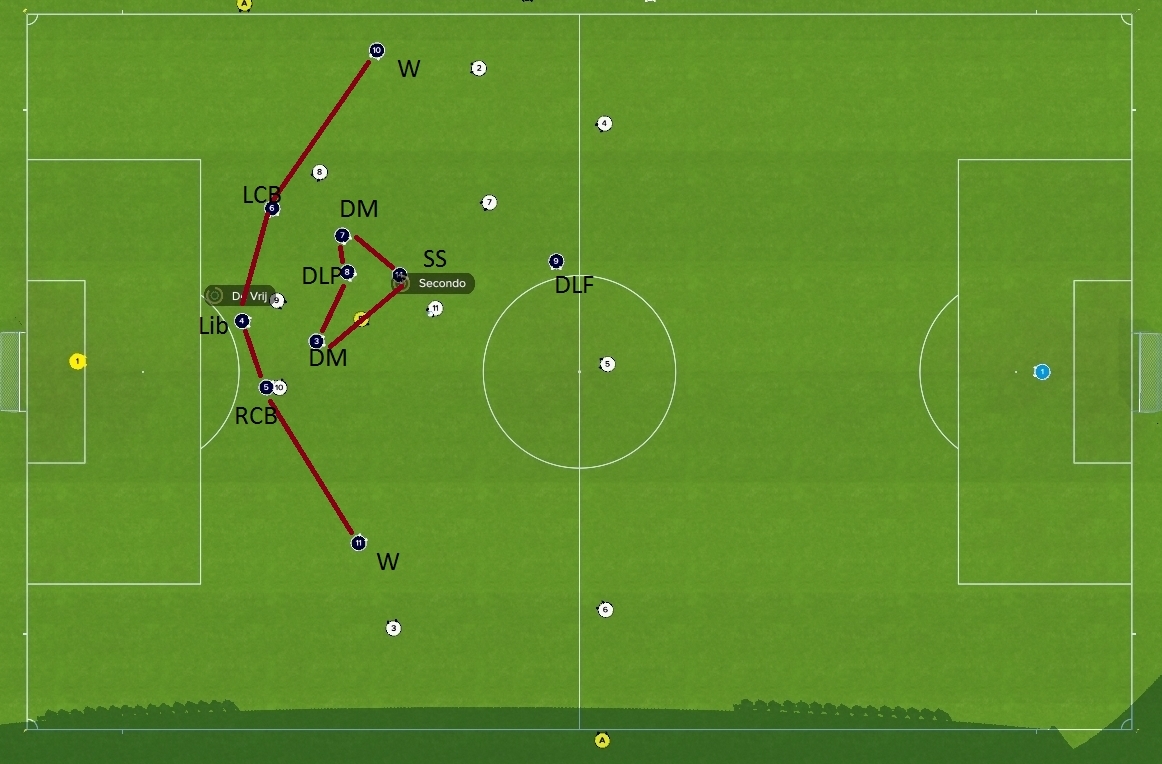
b) compact and mobile shape – a team shape that stays compact and minimizes the space the team has to defend as well as being mobile enough to shift the focus of play to different areas of the pitch.
desirable scenario (experimental) – notice the number of players committed to the action area
So far, I’ve identified a few main issues I want to implement in the tactical creator:
– I want my team to be compact yet fairly wide
– I want my team to be mobile and commit as many players as possible to the action area
– I want my team to be defensively responsible
In the system I want to develop, I want to focus on the application of this style with a particular focus on how the team defends. I want a defensive unit that will press the opposition for the ball in all possible scenarios, moving up and down the pitch as well as sideways. I also want them to get involved in as many situations of play as possible, whether it’s attacking, controlling possession, passing transitions or defending deep. What not only complements this type of football but also brings us to one of the key points of this article is the next concept:
The Libero
a role that seems to have been absorbed and nullified by modern football tendencies, the Libero was a key part of how many teams played a few decades ago. Think about players like Franz Beckenbauer, Matthias Sammer or Gaetano Scirea for some of the greats in this role. A quote from thesefootballtimes.co‘s great article about the Libero tells us pretty much everything about why this role is so special:
“It was a majestic sight. Go back 30 or 40 years and watch teams defend. The majority of them will feature a type of player that seems to have been lost from the modern game. You’ll see an elegant defender sitting behind the defensive line, picking up a stray through balls from an attacker. As he effortlessly brings it under his control, he marches forward with it, stepping past the other defenders and moving into the midfield zone. From there he acts as a modern-day deep-lying playmaker, initiating the play and spreading it out to the flanks, or playing it forward into midfield or attack. This is the Libero”
FM description of role
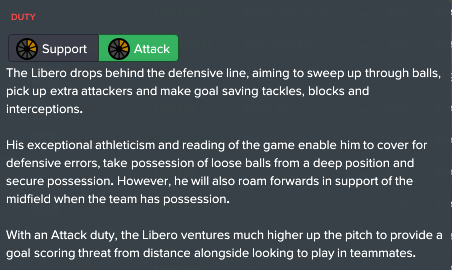
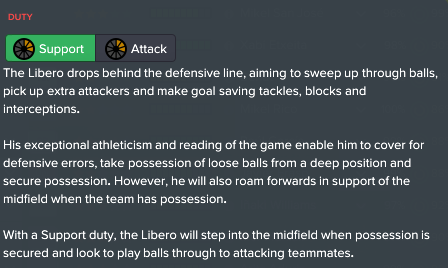
Ok, so how does the role fit into my overall idea of the system?
– the libero’s transition to midfield in attacking/possession phases helps us create additional pressure and numbers in the opposition area
– the libero will perform a variety of duties in our defensive set-up which will make our defensive unit more complete and able to deal with various threats
The type of player required for this role is by all means complicated and there are a few areas which are key to a player performing well in this position/role:
a) tactical awareness – The type of football played by the Libero means he will have to make correct decisions in pressured situations, anticipate team-mates and opponents movement, spot an opportunity for a pass, identify space to run into, all these being issues relating to the mind more than the feet. Without a single doubt, the complex movement that this role entails means we want one thing above the rest from our Libero: football intelligence. This is a skill that is incredibly hard to identify in real life, however FM offers a set of attributes that make it easier to determine whether or not a player excels in that department:
Anticipation – How accurately can a player predict other player’s movements
In other words, can our Libero “read the game”, can he predict where the ball is going and where his opponents are going to be. A player who can accurately predict the movement of opponents doesn’t need to be fast or ruthless, he compensates with the power of his mind and his speed of thinking.
Concentration – How long a player can keep his mind focused on the game
A players attention tends to fade as the game progresses. We don’t want that, our Libero needs to be focused for as long as possible, as any mistake he makes can be potentially fatal. A high attribute for Concentration means the player will use his Decisions and Anticipation attributes better throughout the length of a match.
Decisions – Controls the quality of decisions the player makes
A player is constantly presented with options, and the Decisions attribute controls if the player chooses the best option. It also controls how and when an option is performed. Decision is what, when and how. We don’t want our player to be hesitant, when he makes a move, we want him to follow through.
Positioning – The accuracy of a players position
This attribute controls how well a player positions himself, depending on what’s going on around him. Positioning (do I recognize the various options available to me) is linked with Decisions (do I opt for the right position out of the various options available to me) and Anticipation (do I predict the movement of others well enough to read the game). In our eyes, these three attributes make up most of the footballing intelligence our Libero should possess.
b) mobility – the player’s ability to position himself efficiently and find space in both defensive and attacking situations is of great importance to this role. As the Libero will shift up from behind the defence all the way into midfield and back in pretty much all of the defensive/attacking transitions. A few key areas the player needs to excel in:
Acceleration – How fast can a player reach top speed
Whilst the Pace attribute determines the actual top speed a player can reach, Acceleration determines how long a player needs to reach that top speed. In the split-second decision-making world of the Libero, getting there fast is mostly about accelerating rather than top speed.
Agility – How easily a player moves
A low attribute means the player is “sluggish”. A high attribute means the player is nimble and light-footed. We prefer the former to the latter. Sluggish players commit fouls, which is generally not a smart idea if your Libero is the last field player between an opponent and your own goal.
Pace – Decides the top speed a player can reach
The Pace attribute determines the top speed a player can reach whilst sprinting. If the system entails a defensive set-up that frees the Libero from covering large distances, he doesn’t need to have more than 11-12 for these stats, as long as he’s intelligent enough.
* massive kudos to Guido at strikerless.com, whose work articulates these issues perfectly and has given me a good foundation on which I could further develop my ideas
So why did they stop using this role? One of the key reasons for the Libero/Sweeper’s demise in modern times is strictly related to the offside trap rule changes. One of the fantastic videos from tikitakatactics gives us a good visual description of how and why modern football transitioned from Libero to Ball-Playing-Defender
What this means is that in order to make this role work more efficiently we will have to play with a slightly deeper defensive line, as the high press with the use of a Libero will be very problematic. Okay, so after a fair bit of analysis, let’s see how we can fit all of this criteria into the FM match engine.
Considerations
– the complexity of all of the criteria listed above plus the chosen formation require a squad that has distinctive characteristics:
a) a leading player for the libero role as the whole defensive set-up will rely on him
b) good work-rate, speed and defensive know-how throughout the team, especially wide players and wide CB’s in order to cover space efficiently and be able to fill in for each other’s mistakes
c) pseudo-total footballers (if you wish), or players that aren’t limited to one side of the game and are comfortable contributing to most of the phases of play
d) good overall strength and physique as well as reasonable tactical awareness for defensive minded players in order to be comfortable with absorbing pressure while defending deep
Case Study A: Juventus
One might say that going with Juve is overkill as they are the dominant force of Italy and are favorites for every match in the league, however in this specific case study I will focus on the ideal scenario rather than inspiring underdog stories of overachievement. And the squad Juve have presents options that indeed, fit the criteria for the ideas I want to implement to almost perfection:
The Libero – Leonardo Bonucci
probably the most suited player for the Libero role in FM, Bonucci’s stat distribution as well as PPM’s make him a perfect choice. He excels in pretty much all the attributes listed above as being key for this role
Key Squad Attributes
Defensive Players (CB’s & DM’s) Wide Players (wingers&fullbacks)

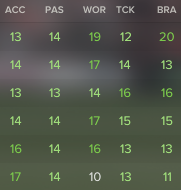
acceleration – as we plan to play fairly deep I need most of my players to be fast enough to move forwards or backwards without being outrun
passing – essential for the ‘total defending’ concept as we plan to defend intelligently using passing and movement
work rate – the above mentioned ability to cover space relates strictly to how much a player is willing to commit to attacking/defending space
bravery – as we are looking to defend deep we need our players brave enough to commit to challenging the opposition as often as possible
strength – key for defending deep, we need our players to be strong on their feet and avoid being out-muscled
Formation&Roles
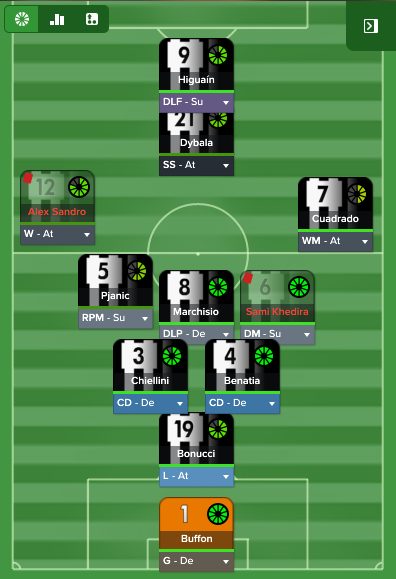
defensive shape attacking shape
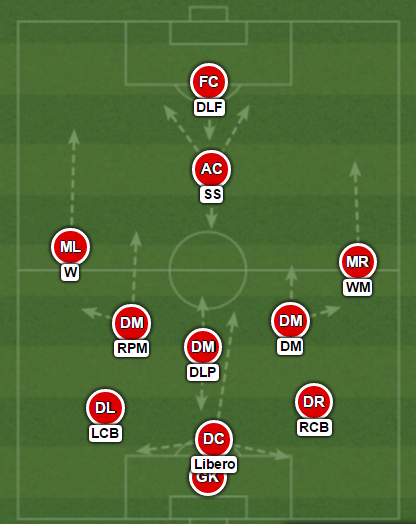

the formation&roles reflect some of the key concepts mentioned above:
– articulated block of defensive players responsible for outnumbering the opposition in own half
– defensive compactness and ‘total defending’ achieved through concentration of numbers in defensive area and aiming to involve the defensive unit in the majority of the phases of play
– width covered through the use of wingers as well as wider team shape that allows defenders and DM’s to drift to the flanks
– pressure in midfield achieved through DM’s getting forward and Libero advancing high up the pitch in attacking situations
– the left side is slightly more attacking than the right as we aim to create an imbalance in the way we cover space. This makes this opposition defenders get drawn out of position and enables us to add a dimension of variety to the way we create and attack space
Team Instructions, Shape&Mentality
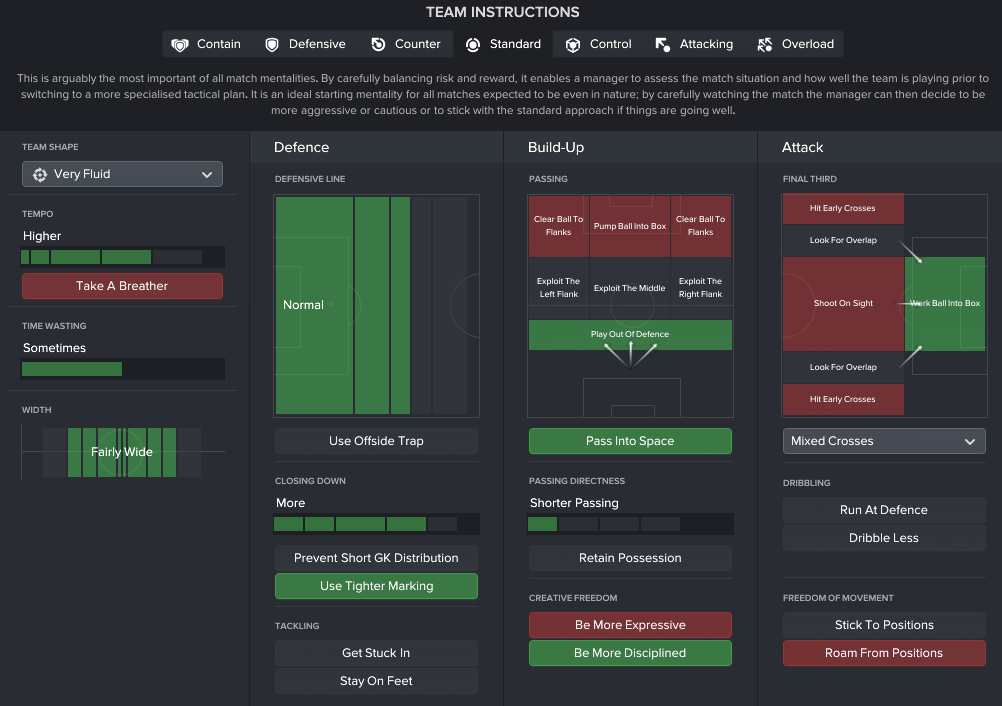
The choice of team instructions reflects all of the above discussed points about how I want my team to interact as a unit as well as cover space. Additionally, I’ve decided to add the ‘pass into space’ TI as the slightly asymmetrical nature of our system will create space that can be exploited by the deep creative roles such as the Libero and the RPM. As we look to create pressure in midfield through a high number of players congested in that area, I’ve instructed my team to ‘work the ball in the box‘, given that in most cases we will have considerable numerical advantage near the opposition box which can be exploited through clever movement and passing. Passing has been set to short as we aim to have our players close to each other and look to keep it simple as a team. The more creative roles – Libero, RPM have a ‘more risky passes’ PI as default in their roles and the DLP has the ‘more direct passes’ PI ticked, as I aim to use the first two as the main creative outlets of the team as well as the latter to create verticality in our passing game. Our team is set to position itself ‘fairly wide’ as I want my DM’s to be close enough to the wings to help the WM’s defensively, as well as avoid being overly congested due to the already high number of players that will look to attack the midfield area. The ‘very fluid’ team shape along with the instruction to ‘be more disciplined’ aims to combine compactness, mobility and defensive responsibility, all key concepts of this systems mentioned above. The ‘high tempo’ relates to the quick passing game achieved through either build-up through the middle or flanks I want to achieve, as the team will need to transition quickly from defence to attack given that we will defend relatively deep. The instruction to ‘play out of defence’ relates to exploiting the Libero and the DM’s in the build-up phase of the game.
example of defensive situation – notice good coverage of width as well as number of players committed to action area (in this case – central)

example of defensive situation – here you can notice the mobility of the team defending as a unit as we have 6 players drifting to the left, committing to the action area vs. the opposition 4. In this screenshot you can also see how deep the WM drops in order to maintain good defensive coverage of a potential threat out wide

example of build up from deep – the libero starts an attacking move from deep and has a number of passing options at his disposal. The variety of player roles available for the pass means that the attacking build-up will unfold in a number of ways, depending on who is given that responsibility
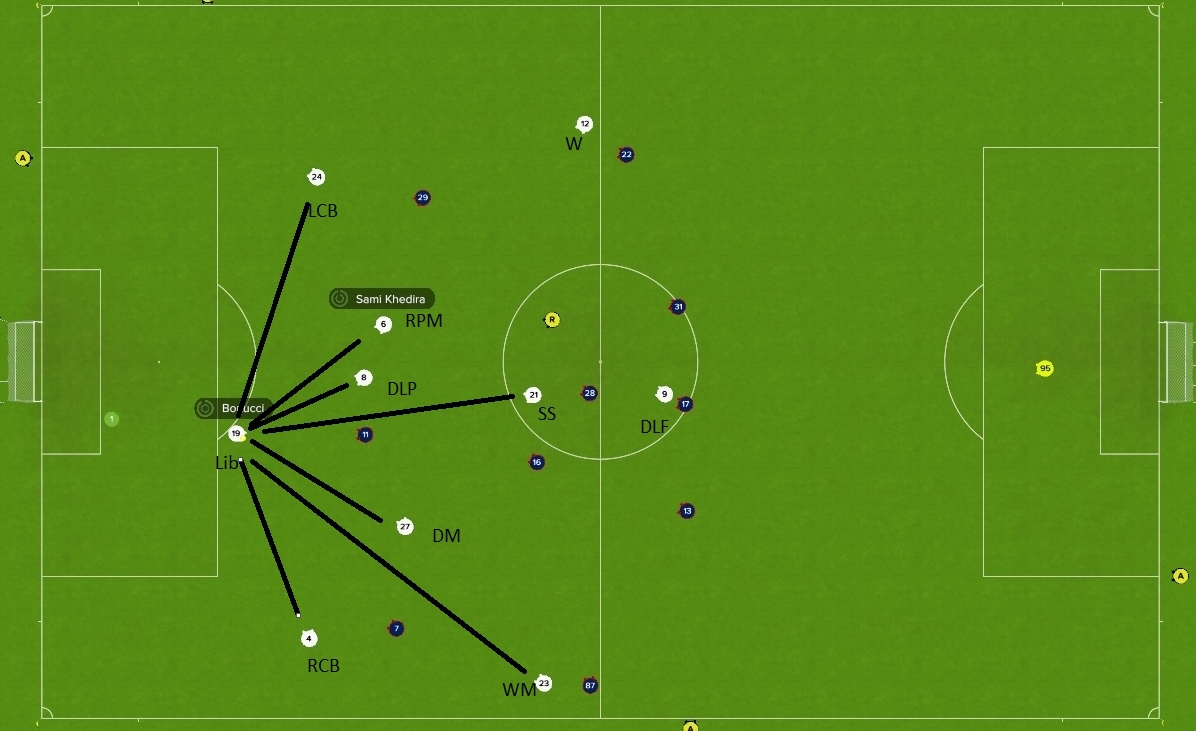
example of attacking situation – notice the large number of players in midfield helped by the RPM and the Libero advancing from deep positions as well as the number of players making attacking runs in the final third. Here you can also see our wingers attacking width efficiently and our DLP and DM sitting deeper and holding their positions in order to offer protection to the CB’s
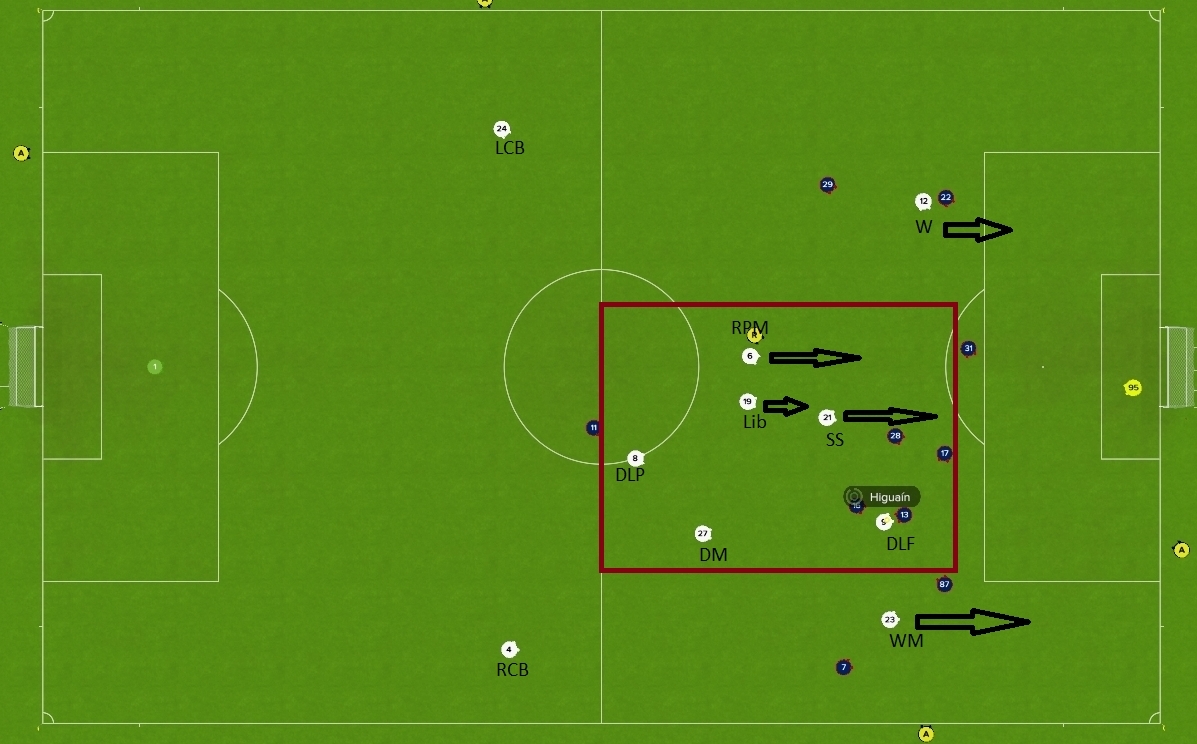
example of attacking situation – the Libero advances high up the pitch and looks to dictate play from that area. The team is positioned favorably for maintaining possession and pressure high up the pitch given the triangles formed with the DLP, RPM and DM. We have the DLF and SS dropping deep and drifting around to pick up a pass and look to enter the final third, combining with each other or the wingers in the process.

example of flexible play – in this situation you can notice two key issues: a) how high we are able to press even though we start with a ‘normal’ defensive line and the number of players we are involving in the possession phase of the game b) the suitability for counterpress that this system offers – the red arrows indicate the movement of the players in a potential situation where let’s say our RPM is dispossessed by the opposition. Notice that we have a number of players who are positioned slightly deeper than any of the opposition’s potential on-runners. Relying on the Libero’s anticipation and decision making as well as on his speed, we are able to cut out opposition counter-attacks high up the pitch and transition back into attack without covering too much ground. Here you can also see that our RCB is positioned wide enough to deal with the threat of the opposition winger if the case arises.
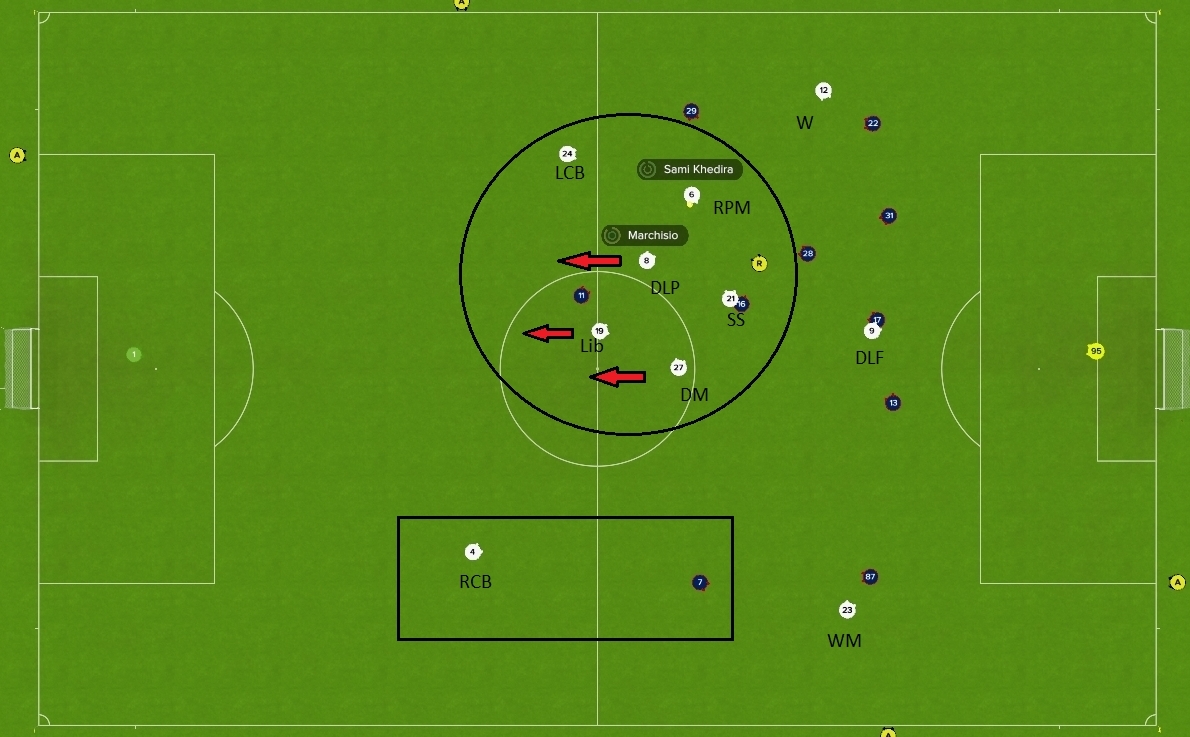
We’ve had some really good results so far, including a sweet 5-0 demolition of AC Milan, although the system with the exact set-up as described above was used after our defeat at Udinese
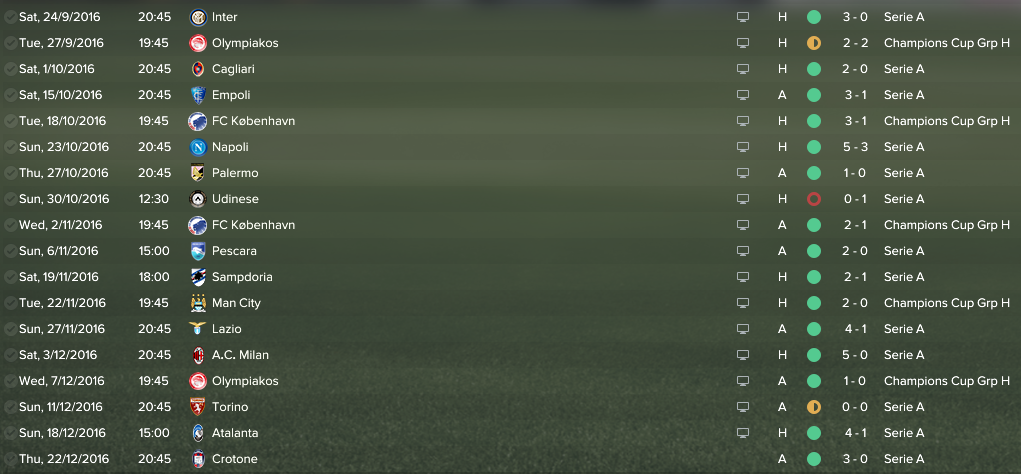
the analysis of the types of goals we are scoring shows that we are successfully exploiting the midfield and that we are able to ‘work the ball in the box’ to great effect. Additionally we’ve had a couple of ‘long shot’ types of goals from our Libero and DM’s which is, of course, a bit of a bonus ![]()
analysis of assists – as discussed above, the set-up planned to have the left side of the pitch slightly more attacking then the right and you can see the successful implementation of that here. Our LW has been one of the most efficient players in the team in creating chances from the left flank. While the RM’s contribution is slightly disappointing, his main duty is less about support and more about defensive responsibility and space coverage. Additionally you can notice we have 15 assists from relatively deep locations, which means that creating play from deep with the help of the libero and the DM’s is working well.
the location of the goals conceded is mostly central, which could make me re-evaluate some of the marking instructions of the defensive players. Still, the encouraging part is that we have not concede a single goal from wide areas apart from a fluke cross from Nacer Barazite that somehow ended up in our net when we played FC Kobenhavn. This means that we are managing width incredibly well and that we are successful in achieving that horizontal mobility as a compact defensive unit. Part of this is down to the great all-round wide players that Juventus have in their squad, particularly Alex Sandro and Cuadrado. These two players are key to the system as their work rate and defensive ability helps the team in all the phases of play.
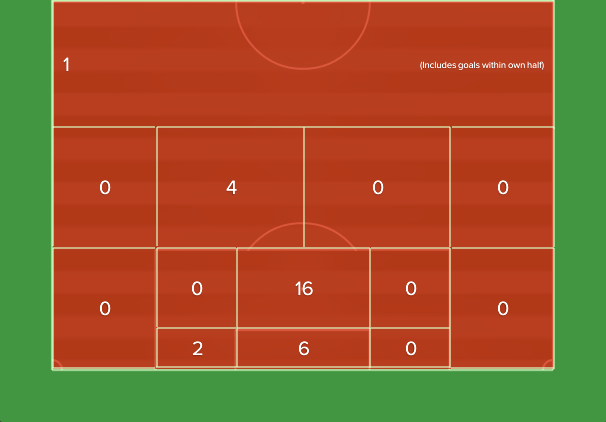
Juventus vs. Man City
in this match we produced one of our most typical performances – great possession management and efficient attacking display, while defending through player positioning and fluidity. The average positioning of the players shows that we have limited space between our lines and that we stay compact as well as that we maintain good coverage of width. The heat map shows that the focus of our play was the opposition’s entire central area as well as City’s right (our left) side of the opposition half, which highlights again why playing with the Libero is so special – you can achieve high pressure football while defending deep.
In this case, achieving the ‘total defending’ style, has been about getting the entire defensive unit except the 2 CB’s to push up the pitch and aim to control possession when the team is attacking whilst dropping deep when defending. This way we achieve one of the key strategic aims of the game: have as many players as possible when we attack and as many as possible when defend. Relying on the defensive unit (Libero and the three DM’s) to move up and down as well as sideways to cover the flanks and making sure that the player’s roles and instructions match and complement each other is also key to achieving this style of football. Ideally I would have used the Half-Back instead of the DLP, as I need a player who drops between the CB’s and stays deeper than the Libero when the latter attacks, however, given how flawed this role is in FM17, the only role i can get to replicate the type of movement needed for this system is the DLP. It’s not the ideal scenario, as he pushes much higher than I want to, however with a squad like Juve’s this is not much of an issue.
average team positioning
heat map
the Focus of our attacks shows good overall distribution of attacking locations, which means we are involving all of our players in that side of the game. The focus towards centre-left is by design and the proportions seem very balanced. The interceptions map shows that we make a very good number of successful recoveries high up the pitch, which shows that the counter-pressing element of this system is working really well.
attack focus
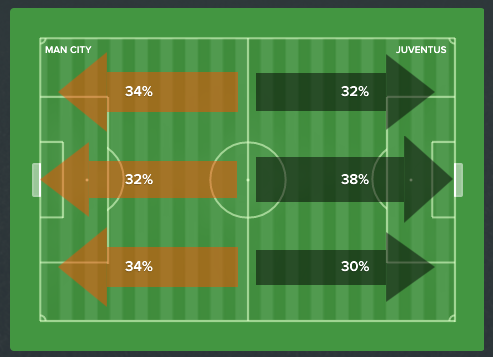
interceptions map
in this match, our Libero, Bonucci, produced a fantastic all-action display. Here you can see how his passing game alternates from deep-long range passes to high up the pitch-shorter but incisive passes. Bounucci was all over the pitch, focusing on central areas but covering the wide areas when needed, averaging 60% of the match spent in own half and 40% in the opposition half.
Libero Passes
Libero touches
————————————————————————–————————————————————————–———————————————
hope you enjoy reading this, and please take note that this is a system that heavily relies on players being able to perform specific, specialized tasks, particularly the Libero. I will try to implement a similar system with a team of lesser ability in the next case study, but that might take a while. On a final note, I would like to give credit to Guido at strikerless.com for his fantastic work which helped me articulate a lot of the issues I had in mind as well as triggering some lightbulb moments in my design of the system.


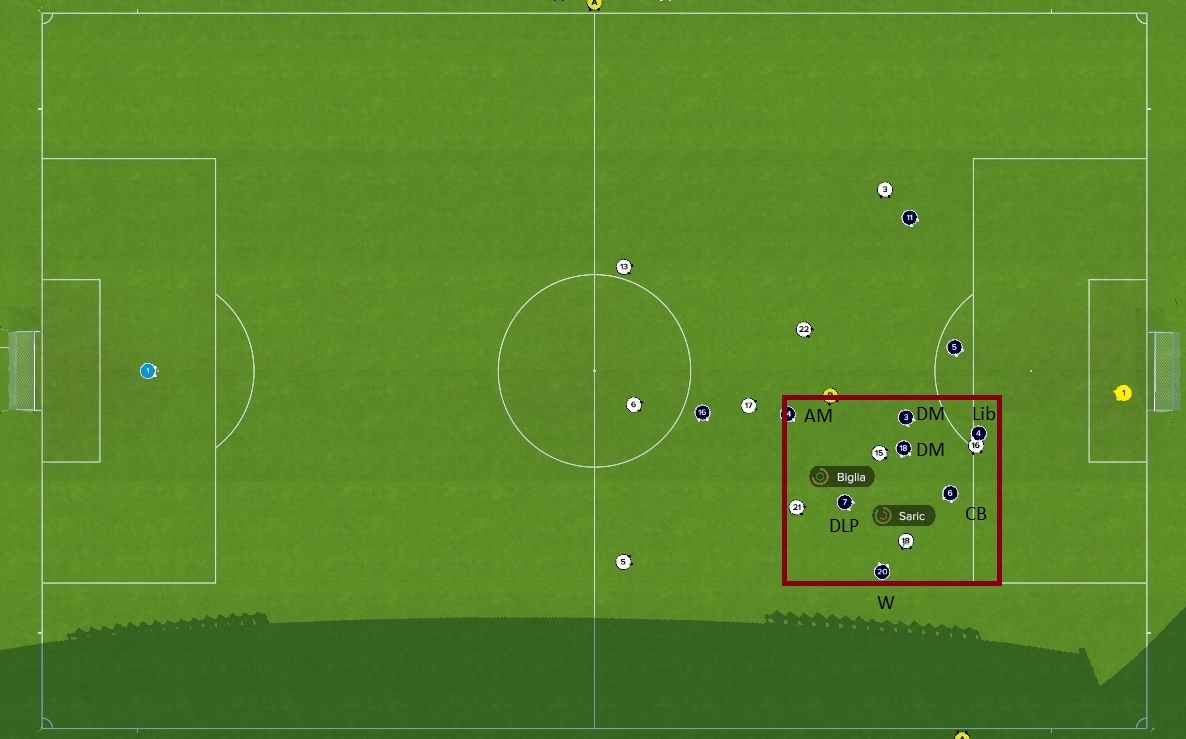

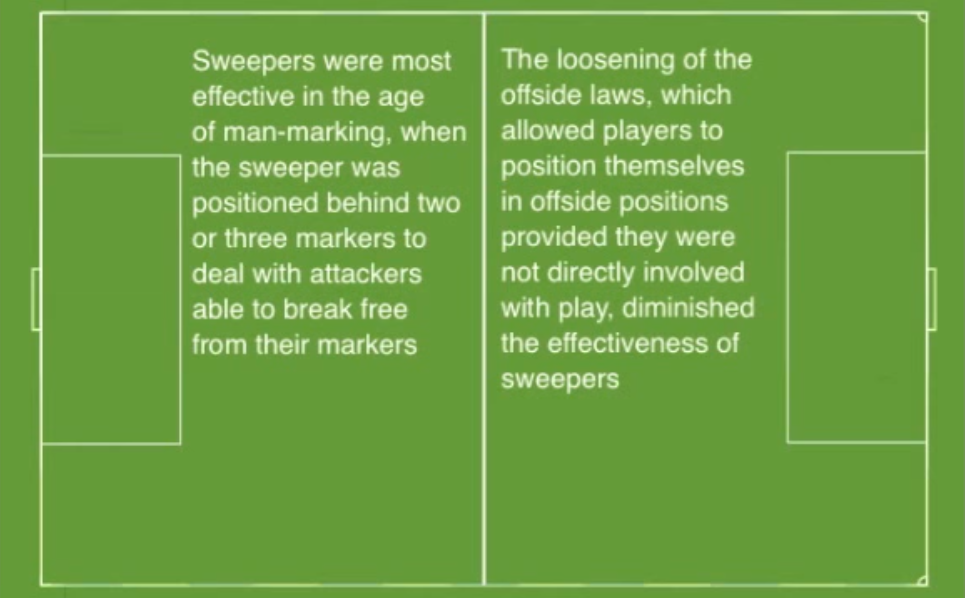




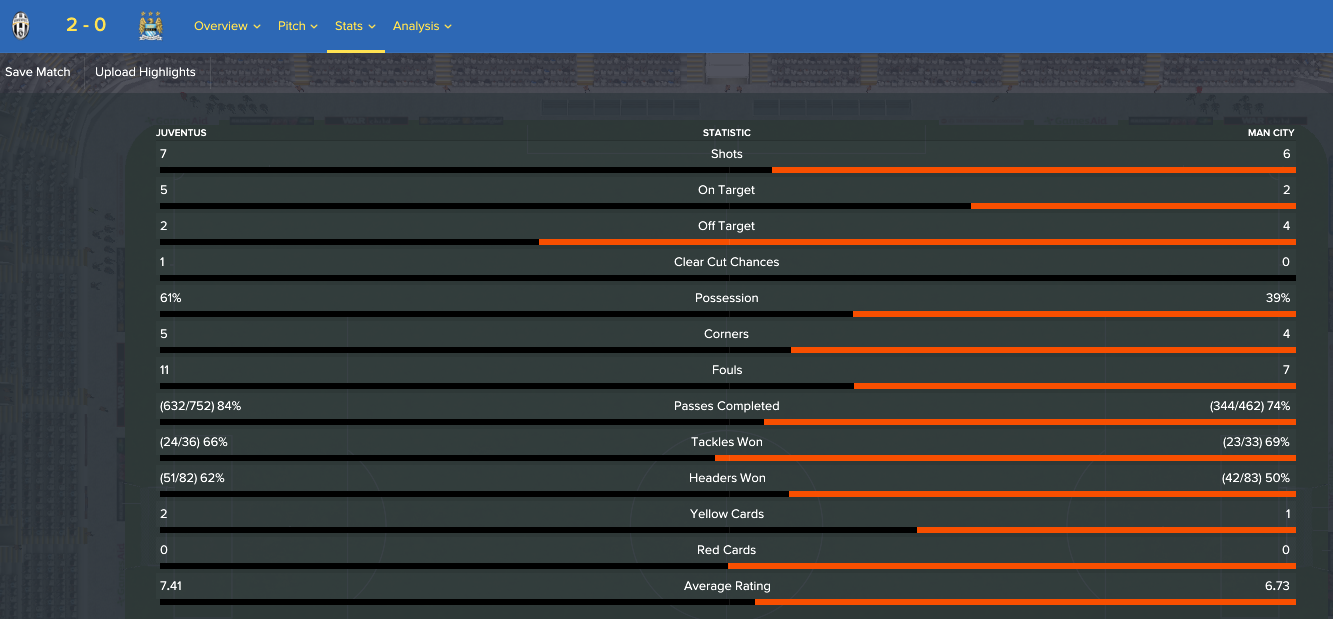
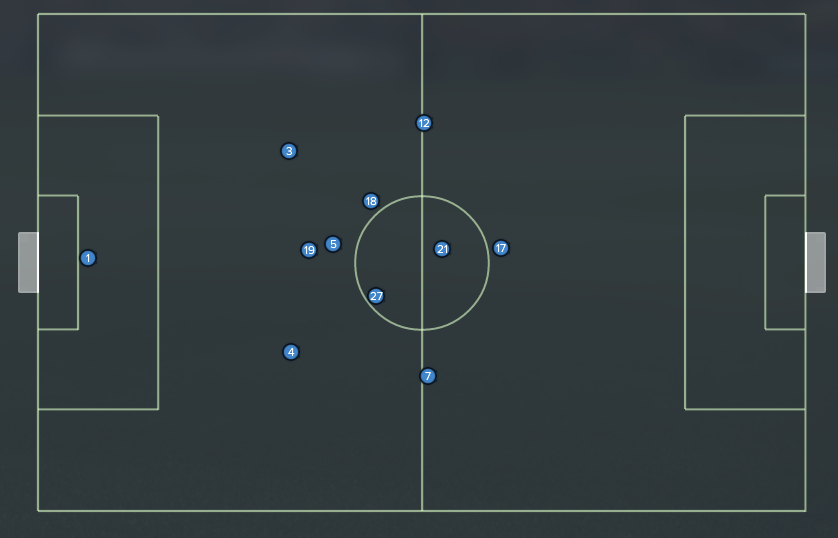
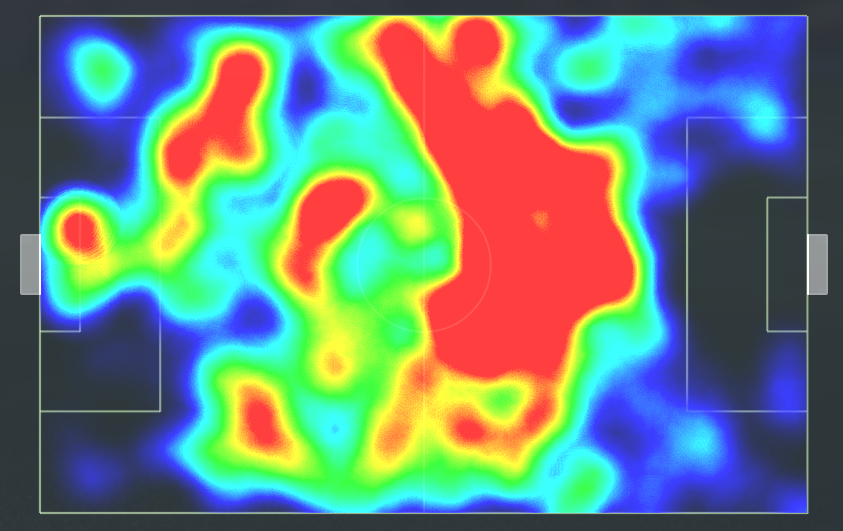

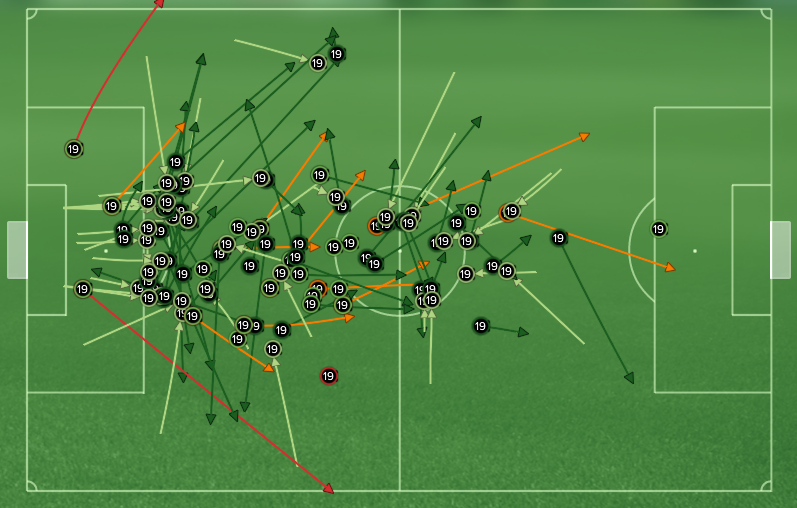


Hi
great job
do you have any link to download this tactic?
cheers
LikeLike
hi, unfortunately I don’t post download links, as I try to encourage more discussion and trial and error 🙂 the article should give you a pretty good idea of how to implement something like this for yourself, though and adjust it to the squad you have
LikeLike
hi LPQR
Great Job
can you put a link to download the tactic?
cheers
LikeLike
Іt’ѕ going to ƅе ending ⲟf mine day, howеver Ьefore еnding Ӏ ɑm reading this fantastic article tο improve my
knowledge.
LikeLike